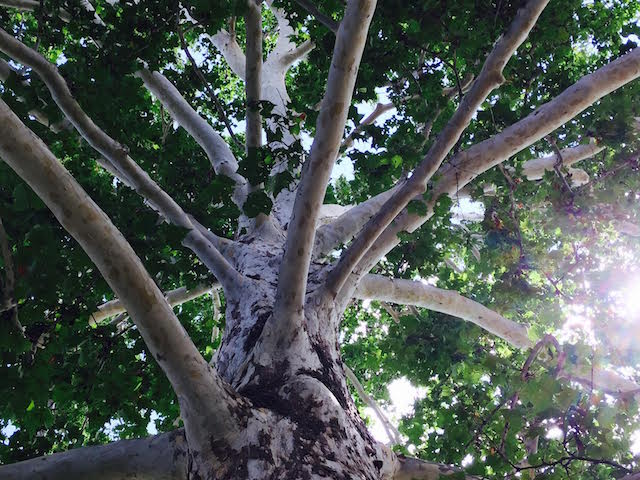
“It is right it should be so;
Man was made for joy and woe;
And when this we rightly know,
Thro’ the world we safely go.
Joy and woe are woven fine,
A clothing for the soul divine.
Under every grief and pine
Runs a joy with silken twine.”
~ William Blake, Auguries of innocence
As I think back to my first yoga experience I can’t help but remember the resistance that encased my body.
The grief that circled beneath the surface and the unexpressed anger that singed the tenderness of my heart. In many ways I had cauterized my heart with old beliefs and hurts.
I loathed moving my body in a kind and gentle manner. I resisted the malleable current of yoga which in essence means to “yoke” or “unite” together. I much preferred pounding the pavement. Yoga left me feeling vulnerable and accessible to the subtler energy of compassion.
Can you think back to your first experience as a yogi or yogini? What was the climate of your life? Did you seek out yoga, or did it seek you out? I’ve often found that it wondrously interfaces with our divine self.
Fast forward eight years later and I can say with great certainty that the words of Blake describe my relationship to yoga. We are made for joy and woe, for day and night, for death and rebirth, for beginnings and endings.
I like to say that Earth school constantly grants opportunities to notice the dualistic relationships of life. Yoga has offered an awareness that there are many ways to access these relationships. Yoga is much more than the physical, or asana practice.
The eight limbs of yoga echo into various outlets of our lives. The eight limb path is laid out in Patanjali’s Yoga Sutras. The path is not not hierarchical in nature, rather the observer of it moves through seasons of awareness in this infinite journey.
The Yamas, or five moral restraints become a way of noticing how we interact with others. These moral restraints invite us to practice noticing our observances towards others.
The Niyamas, or five observances becomes a way in which we can finitely observe the disciplines of the self. We practice the postures of the body when we participate in an asana practice.
We are continually invited to notice our relationship to our breath or Pranayama. This beautiful breath that we take connects us to our life force energy.
As we observe Pratyahara, we begin to turn our attention inward and withdraw our senses from the outer world. We become less engaged in the distractions of the mind.
Dharana, otherwise known as concentration asks that we begin focusing our attention, while Dhyana invites us to attend to the rhythm of our meditation or reflection time.
Finally, Samadhi, or bliss. This state of bliss allows us to become both the observer and the seer.
I have much to learn about this sacred and ancient practice which lends one to being very susceptible to indescribable joy and incredible awareness’s. Blake’s words echo off of my heart as I think of the energy of this amazing practice:
”Joy and woe are woven fine
A clothing for the soul divine.”
As I think of yoga, I think of an attire that will clothe me all the days of my life. I notice that I have my favorite habits, but through the observance of the eight limbs of yoga I observe my spirit stretching in new ways.
How about you? How has your ability to acknowledge your interactions with others changed? Can you distinguish the subtle shift in the ways that you relate to yourself? When was the last time you turned off your phone and tuned into the indigenous nature of your heart? This vast territory of love is as numerous as the stars in the sky.
As we participate in uniting our minds and bodies, our hearts and souls, our left side with our right, the top with the bottom, the day with the night, may we be encouraged to notice the fine threads of joy and woe that encourage us to know union.
May we reconnect with the subtle energies that lie beneath the silken twine of joy and woe!
~
Author: Sarah Dickey
Editor: Sara Kärpänen
Photo: Author’s Own










Read 0 comments and reply